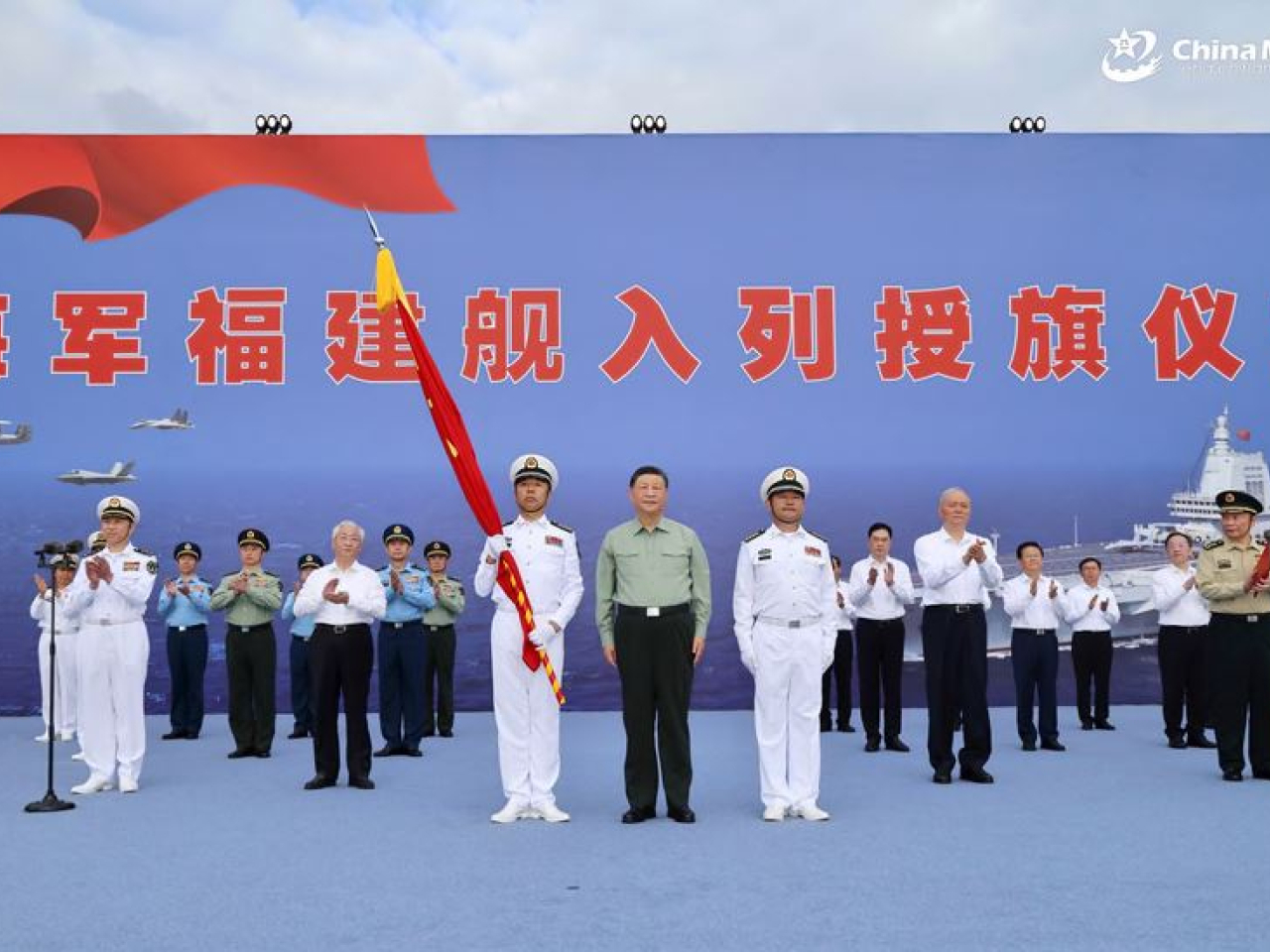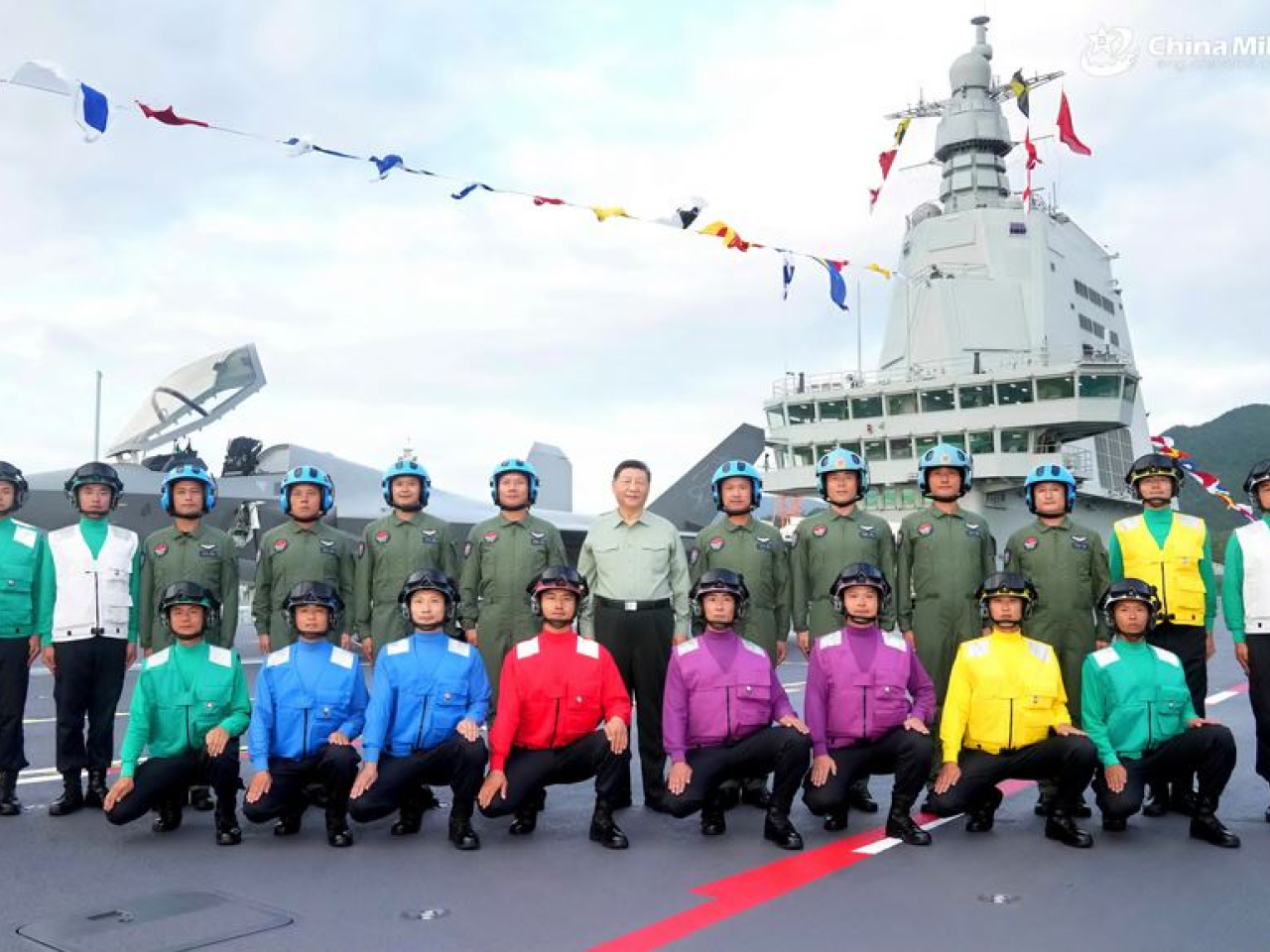President Xi Jinping has attended the commissioning and flag-presenting ceremony of the Fujian, China's first aircraft carrier equipped with electromagnetic catapults, in Hainan province.
Xi boarded the aircraft carrier, launched in June 2022, to inspect the vessel at a naval port in Sanya City.
The Fujian is China’s third carrier and the first that it both designed and built itself.
With it, Beijing takes another step toward closing the gap with the U.S. Navy and its carrier fleet and network of bases that allow it to maintain a presence around the world.
“Carriers are key to Chinese leadership’s vision of China as a great power with a blue-water navy,” or one that can project power far from its coastal waters, said Greg Poling, director of the Asia Maritime Transparency Initiative at the Center for Strategic and International Studies.
China’s “increasingly capable military” and ability to “project power globally” is one of the reasons the Pentagon in its latest report to Congress continued to call it “the only competitor to the United States with the intent and, increasingly, the capacity to reshape the international order.”
At the same time, it is Beijing's right to “transform its navy into a blue-water strategic navy commensurate with China’s national strength,” said Song Zhongping, a Hong Kong-based military affairs expert.
“China’s carriers cannot just operate near home, they must operate in the distant oceans and far seas to carry out various training and support missions,” Song said.
“China is a great power and our overseas interests span the globe; we need to be globally present.”
The Fujian is a step in that direction, allowing China to deploy warplanes far from its shores
China's first aircraft carrier, the Liaoning, was Soviet made and its second, the Shandong, was built in China but based on the Soviet model. Both use older-style ski-jump type systems to help planes take flight.
The Fujian skips past the steam catapult technology used on most American carriers to employ an electromagnetic launch system found only on the latest US Navy Ford-class carriers.
The system causes less stress to the aircraft and the ship, allows for more precise control over speed and can launch a wider range of aircraft than the steam system.
Compared to the ski-jump system, it gives China the ability to launch heavier aircraft, with full fuel loads, like the KJ-600 early warning and control plane, which it successfully tested during its sea trials.
Its latest J-35 stealth fighter and J-15T heavy fighter were also launched from the Fujian, giving the new carrier "full-deck operation capability" according to the Chinese navy.
The ability to carry its own reconnaissance aircraft means it, unlike its first two carriers, won't be operating blind when out of the range of land-based support, giving it the ability to operate its most advanced aircraft far afield including the Second Island Chain.
“The Fujian carrier is a big leapfrog for China in terms of the capabilities of its aircraft carriers compared to the first two,” said Brian Hart, deputy director of the Center for Strategic and International Studies’ China Power Project. (AP/Xinhua)








